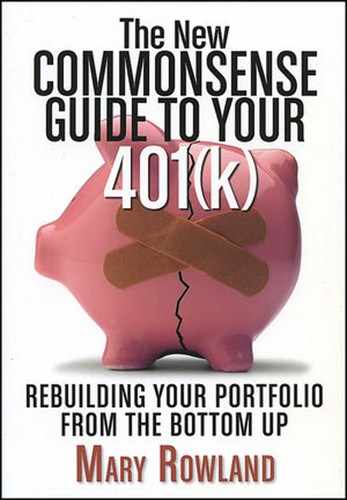WHAT DOES DISABILITY insurance have to do with a book on 401(k) plans? A good deal. Your income—and your ability to keep bringing it in and enhancing it—is your single biggest asset. So the biggest threat to you is an illness or accident that would cut off that income.
If you are a man over thirty-five, there is one chance in five that you will be disabled and unable to work before you retire, according to the National Association of Insurance Commissioners. A thirty-five-year-old woman faces a nearly one-in-three risk of disability lasting at least ninety days before reaching retirement.
You need health insurance to pay medical bills. And you need disability income insurance to keep income coming. Many employees assume that they have adequate coverage through their employee benefit plan and that they don't need to buy an individual policy. But at least 75 percent of American companies do not provide disability policies, while those who do usually provide a short-term policy to tide you over for a period of days or weeks.
If you buy an individual disability policy and pay the premiums, your benefits will be tax-free. If your employer pays the premiums, benefits are taxable. To buy disability insurance, you must prove that you are in good health and that you have an income. Don't wait until you need it. You may not qualify.
What should you look for? Policies are both complex and expensive: the more complex, the more expensive. "There are a lot of bells and whistles on disability policies that significantly increase the premium amount," says Michael J. Chasnoff, a financial planner in Cincinnati. "Too often people buy features that they are unaware of that add a lot to the premium."
Cost-of-living adjustments can add 50 percent to the premium—a nice feature, to be sure, but perhaps not affordable. Focus on getting the highest possible monthly benefit. "Get high basic coverage and leave out some of the extras," says Glenn S. Daily, an insurance consultant in New York and author of The Individual Investor's Guide to Low-Load Insurance Products.
When you shop for a policy, check the following:
The waiting period. This is comparable to a deductible on a medical plan. The longer you wait before drawing benefits, the lower the premium. The waiting period ranges from 30 days to 180 days and more. Most financial planners recommend a 90-day waiting period. That means you would start collecting benefits four months after you are disabled—the 90-day wait and another 30 days before the insurer writes the check.
The benefit period. You can buy a policy that will pay benefits for one, two, or five years, until you reach age sixty-five, or for your lifetime. Most advisors suggest age sixty-five. Lifetime coverage is extremely expensive.
Income replacement. Look for a benefit that would replace 60 to 70 percent of your total compensation. If you earn $100,000, your policy should pay $60,000. Remember that no tax will be due on your benefit.
I believe that consumers will become even more cost conscious about financial products in 2010 and beyond. They must. We all need to protect ourselves from the most devastating losses. But insurance policies, often misunderstood, give us an opportunity to cover what could be devastating losses and still save money by sholding the more predictable losses ourselves.
